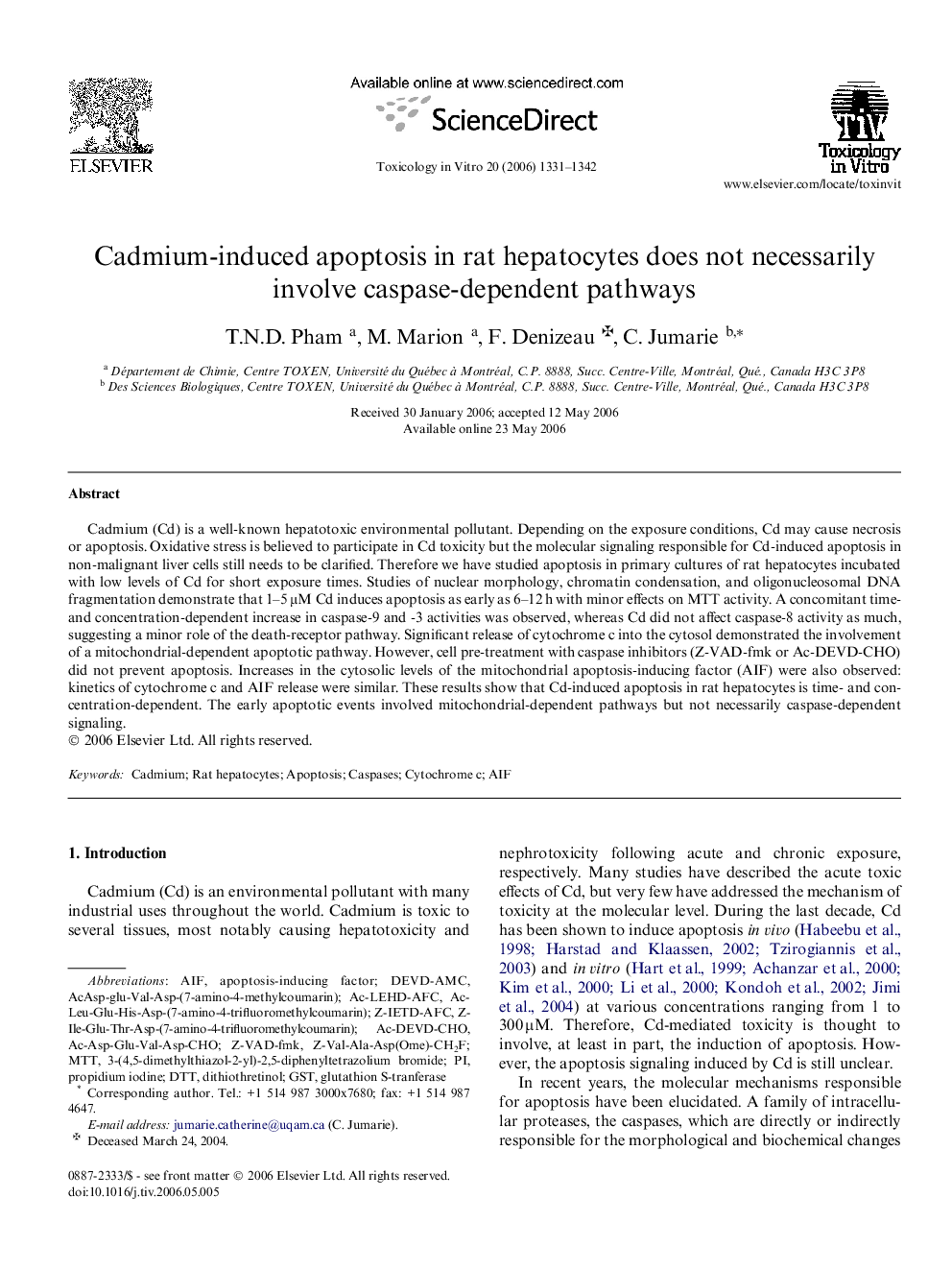| Article ID | Journal | Published Year | Pages | File Type |
|---|---|---|---|---|
| 2603574 | Toxicology in Vitro | 2006 | 12 Pages |
Cadmium (Cd) is a well-known hepatotoxic environmental pollutant. Depending on the exposure conditions, Cd may cause necrosis or apoptosis. Oxidative stress is believed to participate in Cd toxicity but the molecular signaling responsible for Cd-induced apoptosis in non-malignant liver cells still needs to be clarified. Therefore we have studied apoptosis in primary cultures of rat hepatocytes incubated with low levels of Cd for short exposure times. Studies of nuclear morphology, chromatin condensation, and oligonucleosomal DNA fragmentation demonstrate that 1–5 μM Cd induces apoptosis as early as 6–12 h with minor effects on MTT activity. A concomitant time- and concentration-dependent increase in caspase-9 and -3 activities was observed, whereas Cd did not affect caspase-8 activity as much, suggesting a minor role of the death-receptor pathway. Significant release of cytochrome c into the cytosol demonstrated the involvement of a mitochondrial-dependent apoptotic pathway. However, cell pre-treatment with caspase inhibitors (Z-VAD-fmk or Ac-DEVD-CHO) did not prevent apoptosis. Increases in the cytosolic levels of the mitochondrial apoptosis-inducing factor (AIF) were also observed: kinetics of cytochrome c and AIF release were similar. These results show that Cd-induced apoptosis in rat hepatocytes is time- and concentration-dependent. The early apoptotic events involved mitochondrial-dependent pathways but not necessarily caspase-dependent signaling.
